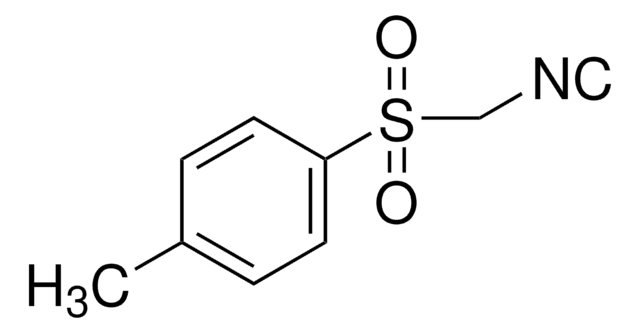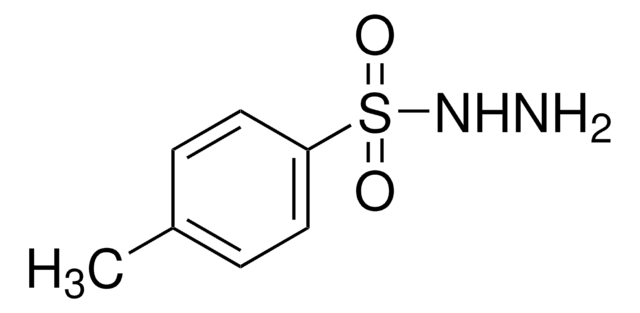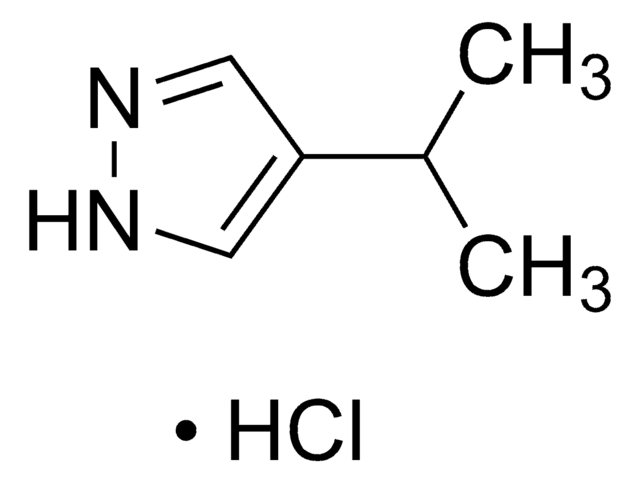All Photos(1)
About This Item
Empirical Formula (Hill Notation):
C4H3F3N2
CAS Number:
Molecular Weight:
136.08
Beilstein/REAXYS Number:
1564179
MDL number:
UNSPSC Code:
12352100
PubChem Substance ID:
NACRES:
NA.22
Recommended Products
assay
99%
bp
70 °C/2 mmHg (lit.)
mp
45-47 °C (lit.)
SMILES string
FC(F)(F)c1cc[nH]n1
InChI
1S/C4H3F3N2/c5-4(6,7)3-1-2-8-9-3/h1-2H,(H,8,9)
InChI key
PYXNITNKYBLBMW-UHFFFAOYSA-N
Looking for similar products? Visit Product Comparison Guide
General description
3-(Trifluoromethyl)pyrazoles is a heterocyclic building block. It undergoes alkylation with alkyl iodides in DMF to afford the N-alkyl pyrazoles. It participates in the synthesis of disubstituted pyrimidines.
Application
3-(Trifluoromethyl)pyrazole may be used in copper-catalyzed pyrazole N-arylation. It may be used in the synthesis of sodium hydridotris(1H-3-trifluoromethylpyrazol-1-yl)borate by heating with sodium borohydride.
signalword
Warning
hcodes
Hazard Classifications
Eye Irrit. 2 - Skin Irrit. 2 - STOT SE 3
target_organs
Respiratory system
Storage Class
11 - Combustible Solids
wgk_germany
WGK 3
flash_point_f
Not applicable
flash_point_c
Not applicable
ppe
dust mask type N95 (US), Eyeshields, Gloves
Choose from one of the most recent versions:
Already Own This Product?
Find documentation for the products that you have recently purchased in the Document Library.
[A simple method for the direct preparation of O2,3'-cyclo-2'-desoxynucleosides].
G Kowollik et al.
Tetrahedron letters, 44(44), 3863-3865 (1969-09-01)
The effect of the 3-trifluoromethyl substituent in polypyrazolylborato complexes on the iron(II) spin state; X-ray diffraction and absorption and Mossbauer studies.
Cecchi P, et al.
Inorgorganica Chimica Acta, 318(1), 67-76 (2001)
Mild Conditions for Copper-Catalysed N-Arylation of Pyrazoles.
Cristau HJ, et al.
European Journal of Organic Chemistry, 4, 695-709 (2004)
Wei Zhang
Organic letters, 5(7), 1011-1013 (2003-03-28)
[reaction: see text] The fluorous synthesis of disubstituted pyrimidines is carried out by attaching 2,4-dichloro-6-methylpyrimidine with 1H,1H,2H,2H-perfluorodecanethiol. The tagged substrate is substituted with 3-(trifluoromethyl)pyrazole followed by thioether oxidation and tag displacement with amines or thiols. The fluorous chain serves as
George P Lahm et al.
Bioorganic & medicinal chemistry letters, 15(22), 4898-4906 (2005-09-17)
A novel class of anthranilic diamides has been discovered with exceptional insecticidal activity on a range of Lepidoptera. These compounds have been found to exhibit their action by release of intracellular Ca2+ stores mediated by the ryanodine receptor. The discovery
Our team of scientists has experience in all areas of research including Life Science, Material Science, Chemical Synthesis, Chromatography, Analytical and many others.
Contact Technical Service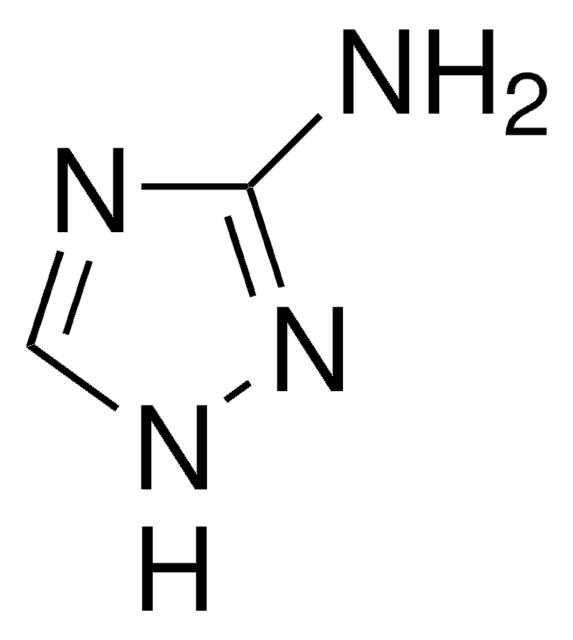
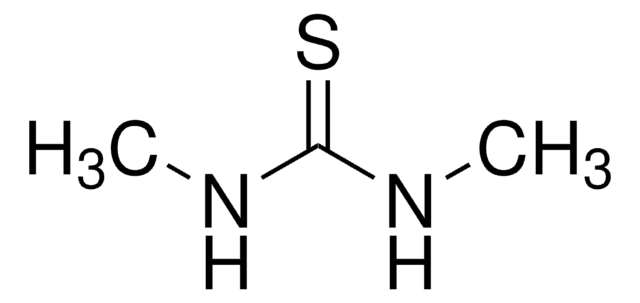



![1H-1,2,3-Triazolo[4,5-b]pyridine 98%](/deepweb/assets/sigmaaldrich/product/structures/344/744/1e7fa2cf-1258-48e0-909f-92509981f43d/640/1e7fa2cf-1258-48e0-909f-92509981f43d.png)
